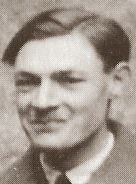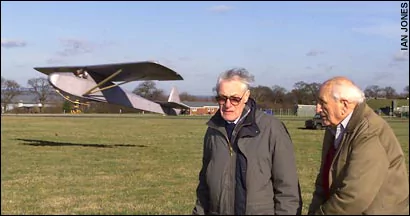Name Bill Goldfinch Role Designer | Died October 2, 2007 | |
 | ||
Flight lieutenant Bill Goldfinch (19 July 1916 – 2 October 2007) was a Royal Air Force pilot who, with Tony Rolt and Jack Best, designed and built a glider in an attic of Colditz Castle, as part of the most audacious of all the projected escapes from the Second World War's most famous prison camp.
Contents

Early life
He was born Leslie James Edward Goldfinch, but was always known as Bill. Born at Whitstable, Kent, he was the second son of William James Goldfinch and Ida Goldfinch. His brother Reginald James Jennings Goldfinch emigrated to Australia in 1928 through the "Big Brother Scheme". After Bill's education at Framlingham College in Suffolk, he served as a second lieutenant in the Royal Engineers from 1935 to 1939. He decided to enlist with the start of the Second World War in the RAF he began training at RAF Martlesham Heath, Suffolk, was then sent to Rhodesia and completed his operational training in Egypt.
Active service
Posted to No. 228 Squadron RAF, he flew Short Sunderlands where he played an important role during the evacuation of Greece. At Kalamata on 25 April 1941 the plane was overloaded with 72 men and on its second attempt required a five-mile take-off run, and reached Suda Bay, Crete. Goldfinch and his crew were immediately ordered to return to Kalamata. As the aircraft attempted to land in the dark it hit an object in the water and sank. Goldfinch was one of four survivors from the crew of 10. Badly injured, he was taken to a military hospital, where he met Best, who had also crashed off southern Greece. The hospital was then captured by the Germans
Escape attempts
At Stalag Luft III he, Best & Henry 'Piglet' Lamond tunnelled outside the perimeter fence and stole a rowing boat on the Oder river. Unfortunately they rowed on the wrong side of the river, and were captured. This time he & Best were sent to Colditz. Lamond remained at Stalag Luft III & later assisted in building the 3 tunnels for The Great Escape.
Whilst at Colditz, Goldfinch & Best headed a team to build a glider that could be launched from the roof of the castle. Known as the "Colditz Cock", it was approaching completion when the camp was relieved by the Allies on 16 April 1945.
The fate of the glider is not known but the castle was in the zone controlled by the Russians who did not co-operate with its reclamation. The only record of its existence was a photograph, probably taken by an American soldier. However Goldfinch had kept his drawings, which enabled a one-third scale model to be constructed. This was eventually launched from the castle roof in 1993.
Six years later a full-sized replica of the Colditz glider was commissioned by Channel 4 and was built by Southdown Aviation Ltd at Lasham Airfield. The glider was flown successfully by John Lee on its first attempt at RAF Odiham with Best, Goldfinch and about a dozen of the veterans who had worked on the original more than 55 years earlier proudly looking on. It is currently housed at the Imperial War Museum in London. Jack Best died later that year.
The programme was shown in 2000 Channel 4 in the UK as part of a 3-part (150 minute total) "Escape from Colditz" documentary. The Channel 4 material was edited to 60 minutes and shown in the US in 2001 as "Nazi Prison Escape" on the NOVA television series.
A further documentary was made which showed a full sized replica of the Colditz glider being successfully launched from roof of the castle, in March 2012. To ensure safety, it was remote controlled.
After the war
After the war Goldfinch settled with his wife Pauline at Poole, Dorset where he was borough engineer. They had one daughter and one son. They relocated to Farley, Wiltshire. On retiring as acting city engineer of Salisbury in 1974, he devoted himself to his love of flying and making aircraft. He built a Luton Minor in the 1970s, which he flew regularly from Old Sarum Airfield until he was in his late eighties.
In 1984, Bill attended his niece's wedding in Suffolk. This was significant for him, as he reunited with his older brother Reginald. He had not seen Reg since 1928.
Over his last eleven years Bill Goldfinch had worked for five days a week, with secondhand materials, on his version of a seaplane which had been developed for the US Navy in the 1920s. It was to have had its second taxiing trials the day after he died.
